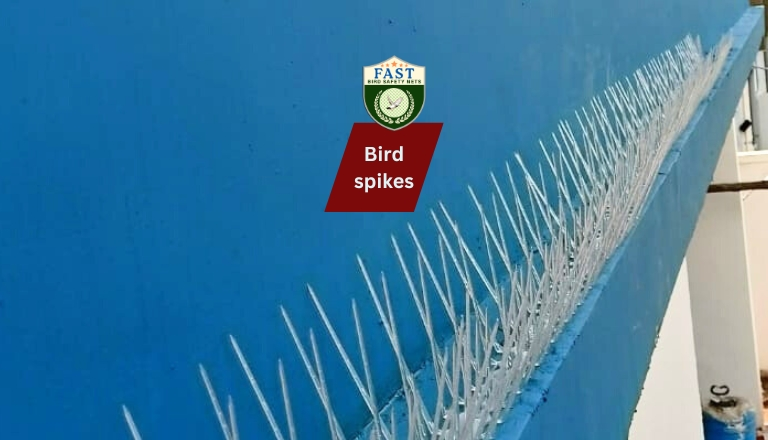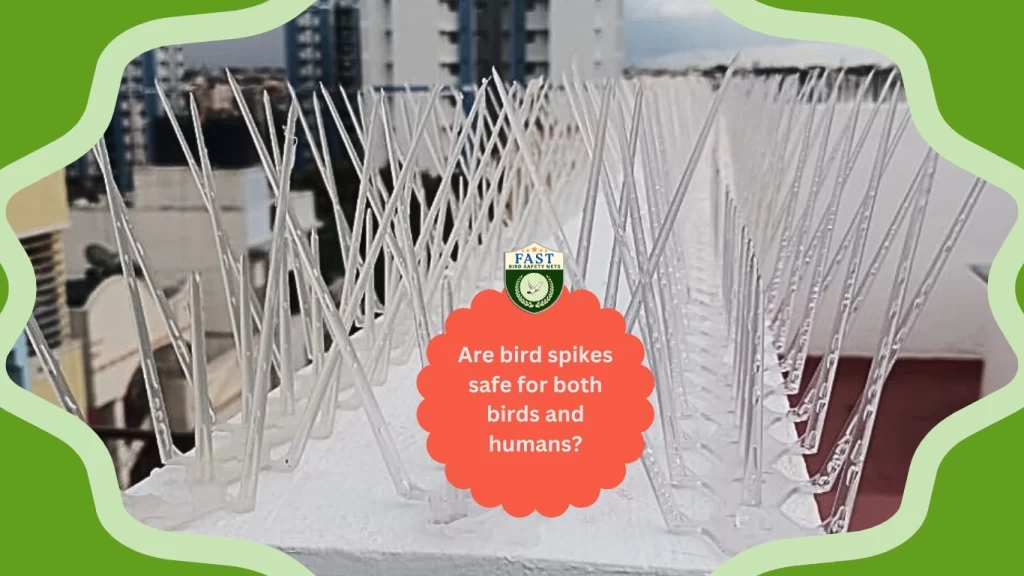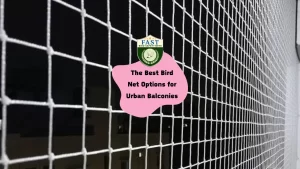Bird spikes are safe for both Birds and Humans. Bird spikes are a widely used solution for bird control, particularly in urban environments where birds can cause damage to buildings and structures. While effective in deterring birds, concerns often arise regarding their safety for both birds and humans. In this article, we will explore the safety aspects of bird spikes and address common questions and concerns surrounding their use.
Understanding Bird Spikes:
Definition and Purpose:
Bird spikes are physical bird deterrents consisting of narrow, pointed rods or strips typically made of plastic. They are designed to be installed on surfaces where birds tend to roost or perch, such as ledges, rooftops, and signs. The primary purpose of bird spikes is to create an uncomfortable surface that discourages birds from landing or nesting.
Construction and Materials:
Bird spikes are constructed using durable materials such as polycarbonate, or UV-resistant plastic. The spikes are typically mounted on a base or strip that can be affixed to various surfaces using adhesive, screws, or clips. This construction ensures longevity and effectiveness in deterring birds.
Safety for Birds:
Humane Deterrent:
One of the key features of bird spikes is their humane deterrent mechanism. Unlike other bird control methods that may harm or kill birds, such as chemical repellents or traps, bird spikes simply create an uncomfortable surface that encourages birds to seek alternative roosting or nesting sites. This humane approach makes bird spikes a preferred choice for bird control in urban areas.
Protection of Nesting Sites:
By preventing birds from landing or perching on surfaces, bird spikes also protect buildings and structures from bird damage. Nesting materials and bird droppings can cause structural deterioration and pose health risks to occupants. Bird spikes help mitigate these issues by discouraging birds from nesting in unwanted areas, thereby preserving the integrity of buildings and reducing maintenance costs.

Safety for Humans:
Installation Safety:
Proper installation of bird spikes is crucial to ensuring safety for both birds and humans. Installers should follow manufacturer guidelines and use appropriate mounting hardware to securely fasten the spikes to surfaces. Care should be taken to avoid sharp edges or protrusions that could pose a risk of injury to humans during installation or maintenance.
Non-Toxic Materials:
Bird spikes are typically made of non-toxic materials such as UV-resistant plastic. This is safe for humans and the environment, posing minimal risk of exposure to harmful chemicals or substances. As such, bird spikes are considered a safe and environmentally friendly option for bird control.
Regulatory Compliance:
Certification and Testing:
Reputable manufacturers of bird spikes typically conduct certification and testing to validate the safety and effectiveness of their products. Installers should prioritize using bird spikes from certified manufacturers to ensure quality and reliability.
Conclusion:
Balancing effectiveness with safety is essential when considering bird spikes for bird control. While bird spikes are generally safe for both birds and humans when properly installed and maintained, it is crucial to address potential concerns and comply with regulations to ensure responsible use. By following best practices and combining bird spikes with other bird control methods as needed, property owners can effectively deter birds while prioritizing safety and environmental protection.






